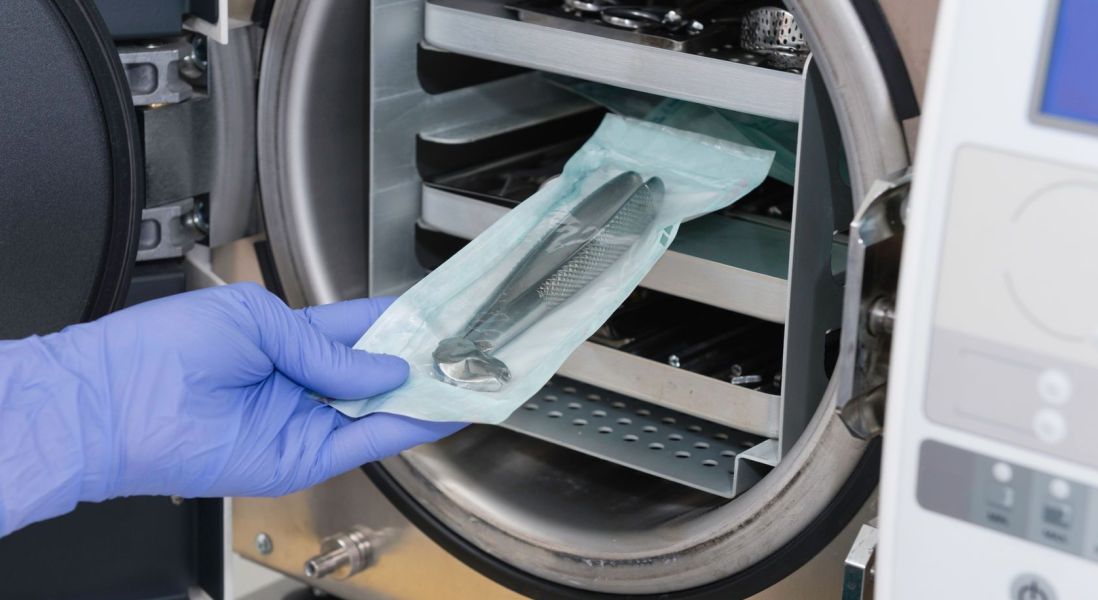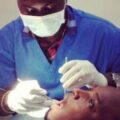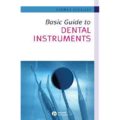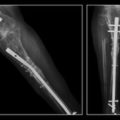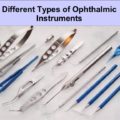All instruments must be cleaned, disinfected and sterilized before each use. Furthermore, before being used for the first time, all non-sterile instruments should be removed from their protective wrapping, cleaned, disinfected and sterilized. An absolute prerequisite for instrument sterilization as laid down in the regulations is that they should be thoroughly cleaned and disinfected.
The user is responsible for instrument sterilization. So please ensure that cleaning disinfection and sterilization are carried out according to approved procedures only. Sterilization equipment must also be subjected to regular control and maintenance. That regulatory cleaning and sterilization cycle criteria are satisfied must also be checked regularly. You must also respect the legal regulations laid down in your country and also the official directives concerning hygiene in medical surgeries and hospitals.
Staff protection: Staff should wear protective gloves, which satisfy state and council standards when handling all used or contaminated instruments. Contaminated instruments should be disinfected as soon as possible to achieve maximum safety for personnel handling such instruments.
For cleaning and disinfecting instruments, if at all possible an automated heat disinfection process should be used. Even in the case of an ultra-sonic bath, a manual procedure should be used only if no automated procedure is available. Manual procedures are much less effective. Pre-treatment should be carried out in both cases.
Pre-Treatment
Remove major impurities from the instruments immediately after use before continuing to treat them individually or in a box /tray system. Soiled instruments must be pre-treated as soon as possible after use.
Use an enzyme-based detergent or a disinfectant solution. The disinfectant should not contain aldehydes (which could fix blood residues to the instrument surface), should have proven efficacy (i.e. corresponding to DGHM authorizations (the German hygiene and microbiology society) and RKI (Robert Koch Institute) or the EC Norm) and should be compatible with and designed for instrument disinfection.
CAUTION : please follow precisely the instructions for use of the disinfection product in terms of time and concentration. If you do not follow these instructions, the edges of the instruments will get damaged. To remove major traces of impurity by hand, a flexible brush should be used, if necessary one with a long handle. Never use metal brushes or steel wool.
Please note that disinfectant products used for pre-treatment are only to protect staff and cannot replace subsequent disinfection.
Automatic Cleaning / Heat Disinfection
Please respect the following recommendations when using the disinfecting apparatus:
the apparatus’ effectiveness has been officially checked, if possible using an approved thermal disinfection program (minimum 10 min at 93°C / AO>3000; the manufacturer’s instructions must be respected). With chemical disinfection there is a danger that traces of the disinfectant remain on the instruments, using a program which is adapted for instruments, and with an adequate number of rinsing cycles, final rinse with de-ionized water (max.10 germs/ml, max. 0,25 endotoxin units/ml),use only filtered air for drying, keep apparatus in impeccable condition.
Please respect the following recommendations when selecting detergent products for use with the apparatus:
- Products intended for cleaning dental instruments,
- Additional use: if the instruments are not suitable for heat disinfection, please take into account the manufacturer’s instructions for cleaning and disinfecting by hand,
- Detergent product compatibility with instruments,
- Product concentration and process time, according to the detergent manufacturer’s instructions.
Procedure
Place the instruments in a box or an appropriate tray system and place this in the apparatus (the instruments should not touch each other).
- Start the program.
- Remove the instruments when the program has ended.
- Check and wrap up the instruments as soon as they have been removed from the apparatus
Manual And Ultrasonic Cleaning And Disinfection
Please respect the following recommendations when selecting detergent and disinfectant products:
- Products must be designed specifically for cleaning and disinfecting dental instruments,
- Use a disinfectant whose effectiveness has been officially checked (for example as authorized by the dghm and rki or bearing the ec symbol), compatible with the detergent used,
- Detergent product must be compatible with instruments,
- Detergent and disinfectant products in powder must be completely dissolved in water before placing instruments in the solution,
- Respect the detergent/disinfectant manufacturer’s instructions for concentration, process time, and temperature.
- Respect the detergent manufacturer’s instructions for product concentration and process time. Use only freshly prepared solutions and de-ionized water with low germ content (max 10 germs/ml) and low contamination with endotoxin (max 0.25 units of endotoxin/ml), and use filtered air for drying.
Cleaning and disinfecting by hand
Cleaning procedure: Place the instruments in the detergent solution to soak for the recommended time making sure that the instruments are completely submerged.
Remove the instruments from the detergent solution and rinse thoroughly with de-ionized water of low-germ content.
Make sure that the instruments are properly cleaned.
Disinfection
- Place the instruments in the disinfectant solution to soak for the recommended time, making sure that the instruments are completely submerged.
- Remove the instruments from the disinfectant solution and rinse five times with de-ionized water of low-germ content.
- All instruments must be perfectly dry before they are wrapped up.
- Check and take care of the instruments
- Wrap up the instruments immediately.
Ultrasonic cleaning and disinfecting
Cleaning procedure
Place the instruments in the detergent solution to soak for the recommended time making sure that the instruments are completely submerged. Respect the process time recommended by the manufacturer of the detergent or the box system. Remark: the instruments should not touch each other.
If you use a box system, ultrasonic cleaning must be for at least 16 minutes or more if the detergent product manufacturer recommends it. Do not over-load the ultrasonic cleaning apparatus. Use a scanning function, if this is available.
Remove the instruments from the detergent solution and rinse thoroughly with de-ionized water of low-germ content.
Make sure that the instruments are properly cleaned.
Disinfection
- Place the instruments in the disinfectant solution to soak for the recommended time, making sure that the instruments are completely submerged. Respect the process time recommended by the manufacturer of the disinfectant. Remark: the instruments should not touch each other.
- Remove the instruments from the disinfectant solution and rinse thoroughly with de-ionized water of low-germ content.
- All instruments must be perfectly dry before they are wrapped up (if necessary let them dry in a clean place).
- Check and take care of the instruments
- Wrap up the instruments immediately.
Verification
After cleaning and disinfection procedures, check that the instruments show no signs of corrosion, damaged surfaces or impurities. Damaged instruments should not be used again. Instruments, which are not yet completely clean, should be cleaned and disinfected again. If necessary, instruments should be re-sharpened. After this remove any residues such as burrs or oil used for sharpening.
Maintenance And Care
If it is not possible to remove corrosion completely, the affected instrument should not be used again because there is a risk that this corrosion will contaminate other instruments. After corrosion removal, the instrument should be cleaned and sterilized again.
Wrapping
We recommend the use of a suitable box system or a sterilization container once the following criteria have been satisfied:
- In accordance with standard Council recommendations
- Sterilization capability in an apparatus (resistant to a temperature of at least 141°C, with adequate steam permeability),
- Sufficient protection of sterile instruments and wrappings against physical deterioration,
- Regular maintenance in accordance with the manufacturer’s instructions (sterilization container).
Sterilization
Use only the sterilization procedures recommended and mentioned below. The user is responsible for the choice of other procedures.
Sterilization By Steam
- Fractional vacuum or gravitation process (adequate product drying),
- Steam sterilizers conform to the en 13060 and en 285 norms,
- Validation conforming to iso 17665/ansi aami iso 11134 norms (checking the machine’s performance to confirm its conformity),
- Maximum sterilization temperature of 138°c and tolerance conforming to iso 17665/ansi aami iso 11134 norm,
- Sterilization time (action time depending on sterilization temperature) at least 20 minutes at 121°c (250°f) or 5 minutes at 132°c (270°f) / 134°c (273°f).
If possible, a fractional vacuum process should be used for instrument sterilization. A gravitation process should be used only if a fractional vacuum process is unavailable; in this case the lower effectiveness of the gravitation process must be taken into account.


